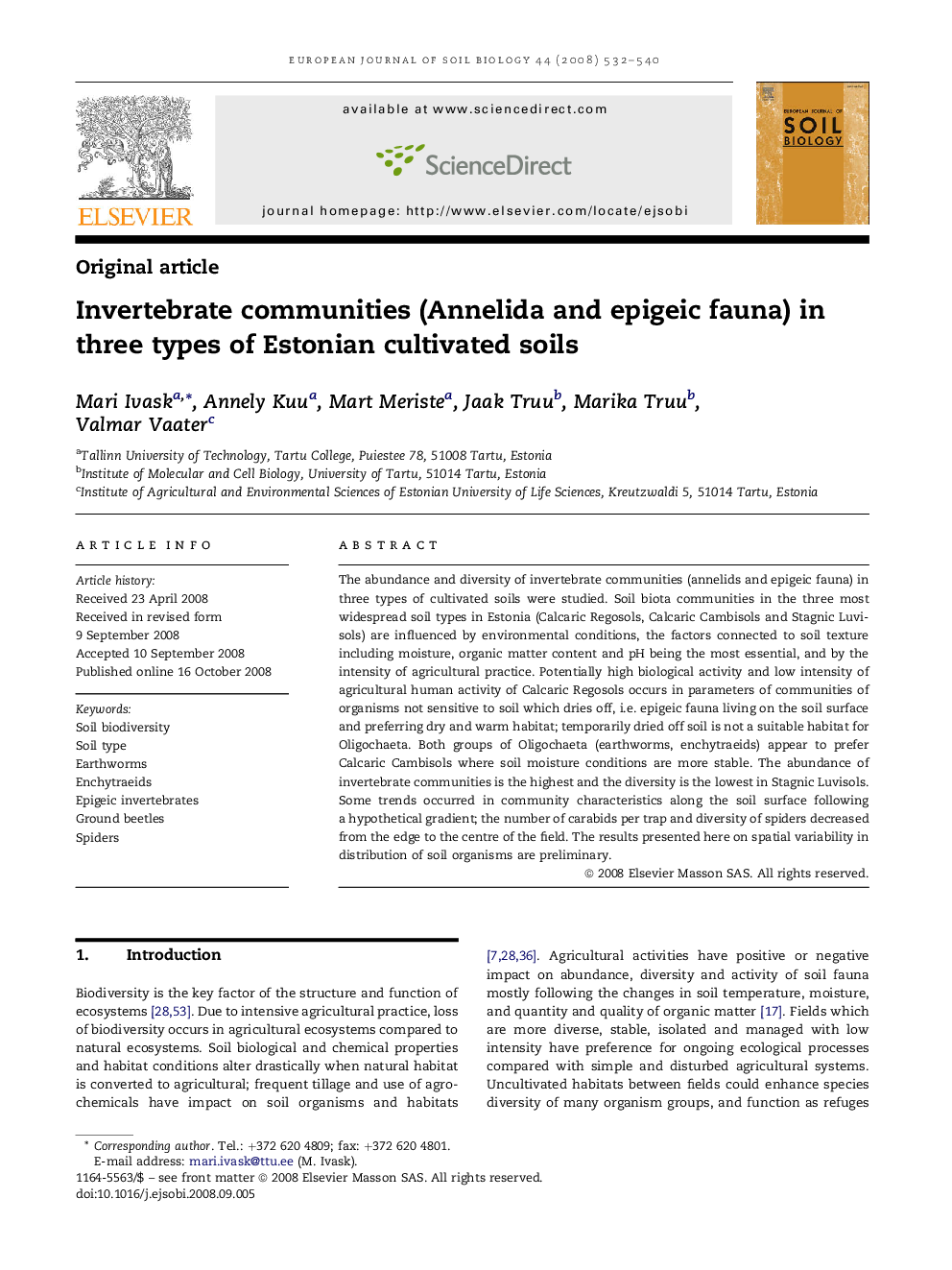| کد مقاله | کد نشریه | سال انتشار | مقاله انگلیسی | نسخه تمام متن |
|---|---|---|---|---|
| 4392381 | 1618161 | 2008 | 9 صفحه PDF | دانلود رایگان |

The abundance and diversity of invertebrate communities (annelids and epigeic fauna) in three types of cultivated soils were studied. Soil biota communities in the three most widespread soil types in Estonia (Calcaric Regosols, Calcaric Cambisols and Stagnic Luvisols) are influenced by environmental conditions, the factors connected to soil texture including moisture, organic matter content and pH being the most essential, and by the intensity of agricultural practice. Potentially high biological activity and low intensity of agricultural human activity of Calcaric Regosols occurs in parameters of communities of organisms not sensitive to soil which dries off, i.e. epigeic fauna living on the soil surface and preferring dry and warm habitat; temporarily dried off soil is not a suitable habitat for Oligochaeta. Both groups of Oligochaeta (earthworms, enchytraeids) appear to prefer Calcaric Cambisols where soil moisture conditions are more stable. The abundance of invertebrate communities is the highest and the diversity is the lowest in Stagnic Luvisols. Some trends occurred in community characteristics along the soil surface following a hypothetical gradient; the number of carabids per trap and diversity of spiders decreased from the edge to the centre of the field. The results presented here on spatial variability in distribution of soil organisms are preliminary.
Journal: European Journal of Soil Biology - Volume 44, Issues 5–6, September–December 2008, Pages 532–540